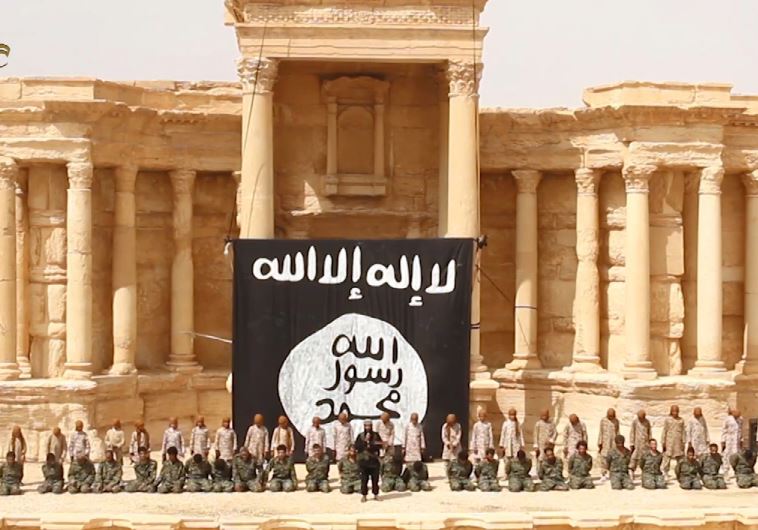Analysis: ISIS and the fantasy of an Islamic caliphate are not long for this world
Yossi Melman/Jerusalem Post/March 28/16
Ten months after the Syrian army withdrew without a fight, allowing Islamic State (ISIS) to conquer the ancient city of Palmyra, Bashar Assad’s forces returned to the city, regaining control of it, while killing and wounding hundreds of ISIS operatives. The Syrian army did not act alone. It was aided by massive strikes by the Russian Air Force – which allegedly withdrew from Syria, but in all actuality continues to act with full force. Assad’s forces also had the help of Iranian consultants, Hezbollah fighters and Afghani Shi’ite militiamen.
Palmyra was etched into the world’s consciousness because of the destruction of its temples and beautiful artifacts, which date back some two thousand years, by the barbarians of ISIS. However, beyond the achievement of returning the city and its artifacts to the control of civilization – fixing the damage will take years – there is also both strategic and moral importance to the recapturing of Palmyra.
Palmyra sits on a central artery between Damascus and Deir a-Zor in the east, toward the border with Iraq. It is likely that Assad’s forces will use their victorious momentum to advance to Deir a-Zor, where Syria’s nuclear reactor was built and fortunately destroyed (imagine the scenario if it would have fallen into the hands of ISIS) in 2007 by the Israeli Air Force. Assad’s forces are then likely to attempt to regain control of the border crossings with Iraq. The reconquering of Palmyra also weakens Islamic State’s ability to defend Raqqa, which it declared the capital of its caliphate.
ISIS now finds itself being enclosed upon on three sides. From the northeast, along the border with Turkey, the Kurdish forces are advancing. From the West, Assad’s forces threaten, and from the east, comes the Iraqi army, which is increasing its attacks on Mosul, the second largest city in the country and ISIS’ biggest urban foothold.
The army of ISIS finds itself constantly retreating. The group is taking losses in the battlefield. Its senior commanders are being killed. The latest such commander, as was confirmed by the Pentagon, was the second-in-command to ISIS leader Abu Bakr al-Baghdadi. Fighters are defecting. Violent confrontations have erupted between foreign volunteers and local ISIS fighters – Syrians and Iraqis. The oil facilities, which were the source of most ISIS income, have been badly damaged by airstrikes. The day is not far off when ISIS as an idea and as a strange fantasy to establish an Islamic caliphate in the style of the seventh century, will expire.
The idea of ISIS will not disappear, but its power and and attraction will weaken. When this happens, ISIS will shrink to its true dimensions: a violent gang of Ba’athist Sunnis, and it will go back to its essence: an al-Qaida style terrorist organization, even if it is a more sophisticated and cruel one. The group’s losses on the battlefield will affect its affiliated groups that have pledged allegiance to it and weaken them. From Boko Haram in Nigeria to Ansar Bayit al-Maqdes in Sinai and those in Europe.
The victory in Palmyra gives Assad’s army a massive morale boost. After solidifying its control in Damascus and the Alawite coast, and after turning its gaze to the north and east, soon Assad’s army will try to regain control of the south, near the border with Jordan, where the uprising against the regime began five years ago, and to the area bordering Israel. The quiet on the Golan Heights is likely to be maintained if and when this occurs.
Assad is improving his bargaining position in talks with the opposition on a diplomatic solution, while in the background, surprisingly, the fragile cease-fire has been holding for the better part of a month. Assad’s improving position is turning from a problem to a solution and serving to further highlight the failure of US President Barack Obama’s Middle East policy.





















